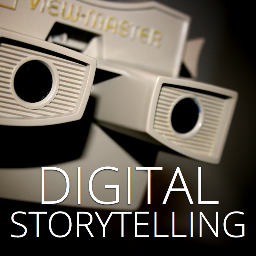Charity Clarity: What Are Some Of Your Best Social Media Tools (for not-for-profits)?
October 17, 2013
3 min read
 Recently, I had the good fortune of participating in the Digital Storytelling Conference. And I was honoured when asked to facilitate the Charity Luncheon beforehand. There were so many great questions that came up over our sandwiches, that I wanted to share them here. More so, I wanted to harness the power of community to find the answers and so, I went out and asked some colleagues and peers to help add a multidimensional layer to these questions.
Recently, I had the good fortune of participating in the Digital Storytelling Conference. And I was honoured when asked to facilitate the Charity Luncheon beforehand. There were so many great questions that came up over our sandwiches, that I wanted to share them here. More so, I wanted to harness the power of community to find the answers and so, I went out and asked some colleagues and peers to help add a multidimensional layer to these questions.
We’ll be posting the answers one by one over the next couple of weeks, so stay tuned!
Last posts:
1. How can the smallest charity be effective telling their story?
2. How can a small charity turn their social media attention into donations and/or purchases?
3. How do we maintain our charity’s “vision” while letting the community share who they think we are?
4. Our charity is health specific. How do you get those that are not directly connected to a specific health issue to connect?
What are some of your best social media tools (for not-for-profits)?
Joel Bentley (Peer Giving): I love Hootsuite for the time it saves me. I also like Shortstack and Snapwidget to use with campaigns.
Dee Keilholz (Charity Express): If we’re talking about tools, Hootsuite would be on top of my list. If we’re talking about platforms, it’s really important for you to find out which platform your supporters are most engaged with. Use monitoring tools such as Google Analytics and figure out what platforms drives most traffic to your website. Hootsuite and Facebook Insights helps you to figure out which platform your supporters and engage with, and how.
Crystal Henrickson (Chimp Foundation): I think this question depends on your audience and whether we’re discussing platforms for engaging, or tools for measuring/saving time.
If we’re discussing the latter, Hootsuite (for managing multiple platforms), Buffer (for scheduling), RebelMouse for aggregating, and Wishpond or Strutta (for contests).
Platforms for engagement: Facebook, Pinterest and Instagram for image based content, YouTube for video, Twitter, LinkedIn, Google+ for text based.
But don’t let the sheer number of choices influence your decision to hone your communities on them — it’s important to consider your audience, and where they spend their time online. It may not make sense to be present on every platform, and even less so if you only take the time to start a profile, but not engage with your community there.
